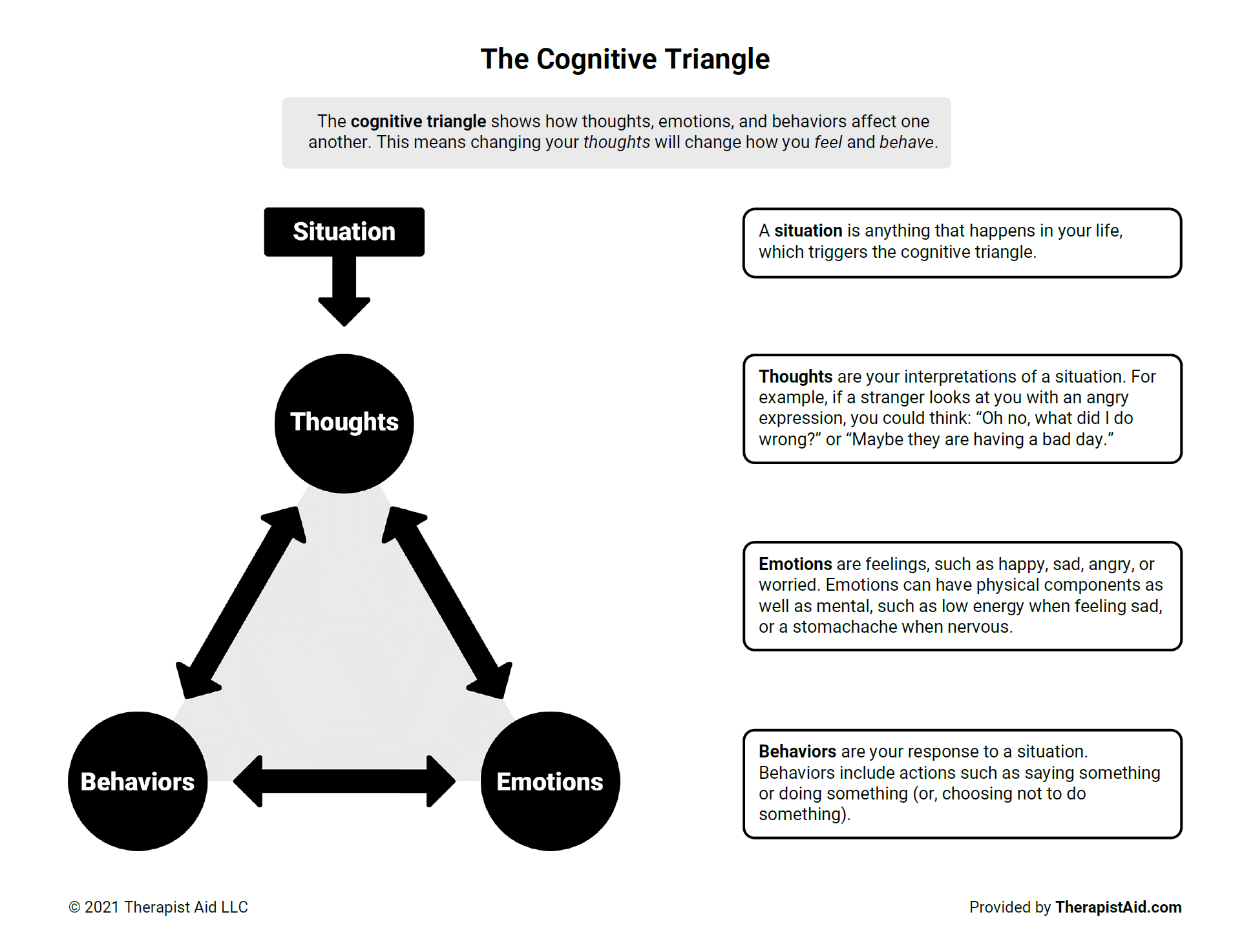Change your thoughts, change how you feel.
Have you ever visited a website for therapy and there were a bunch of terms, definitions, or “types of therapy” listed but none of it made sense? We at Reclamation and Recovery Counseling believe that counseling shouldn’t be confusing. We aim to provide free education so you know exactly what you are getting into. As a disclaimer, while our clinicians are trained to provide the following approaches, it does not guarantee that each tool will be used in your session. If you have any questions, please feel free to Contact Us for your free consultation.
Cognitive Behavioral Therapy
It is likely you have heard of Cognitive Behavioral Therapy (CBT) but it might not have been explained to you. If you haven’t heard of CBT, we will give an explanation of the theory and some common interventions (things you do in therapy). CBT is a counseling theory and approach that believes that your thoughts, emotions, and behaviors are all intertwined. (See image of Cognitive Triangle for further explanation)
In CBT sessions, the counselor typically serves the role of a teacher that aids you in growing awareness of these components. If you are able to learn how your emotions, thoughts and behaviors are connected, the hope is that you can enact change on the troubling part of your life.
For example, if you are coming into counseling because you are feeling stressed out in life, these may be some things you would do in counseling:
Examine the behaviors you are taking that are leading you to being stressed.
Modifying the behaviors that are stressing you, by replacing them with healthy alternatives.
Exploring the way you think about yourself when stressed to determine if your mindset is negatively impacting your overall mood.
Image provided by www.therapistaid.com, describing the Cognitive Triangle.
With the explanation of CBT taken care of, here are some common strategies that are used in session:
Journaling and thought records: That’s right, the tried and true method of writing about your feelings. This technique is used two different ways, for you and your therapist! The first is, it is a great way to get all of your feelings out of your head and expressed. Secondly, it is a good way for your counselor to learn more about your thought process. This will allow your counselor to be better informed and implement appropriate strategies in future sessions.
Cognitive Restructuring: This strategy is the process in which you and your counselor take a look at your negative thought patterns to learn where they come from, and attempt to change them into something more constructive and helpful to you. Your counselor will support you in challenging these harmful thoughts and to realize that you are more than the bad things you think about yourself!
Role Playing: Who doesn’t love to act things out? This strategy is a helpful tool in providing you real time practice and experience with trying new skills out that you have learned in therapy to face difficult challenges in life. For example, you have learned about how you want better boundaries with your mother-in-law in your sessions. In Role Playing, your counselor may pretend to take the role of your mother-in-law (don’t worry, they won’t ask about wanting to be invited to Thanksgiving Dinner)! In doing so, you will have the opportunity to practice what you would like to say them, and your counselor can give you real-time feedback.
